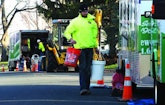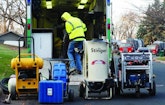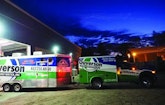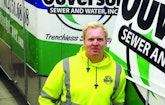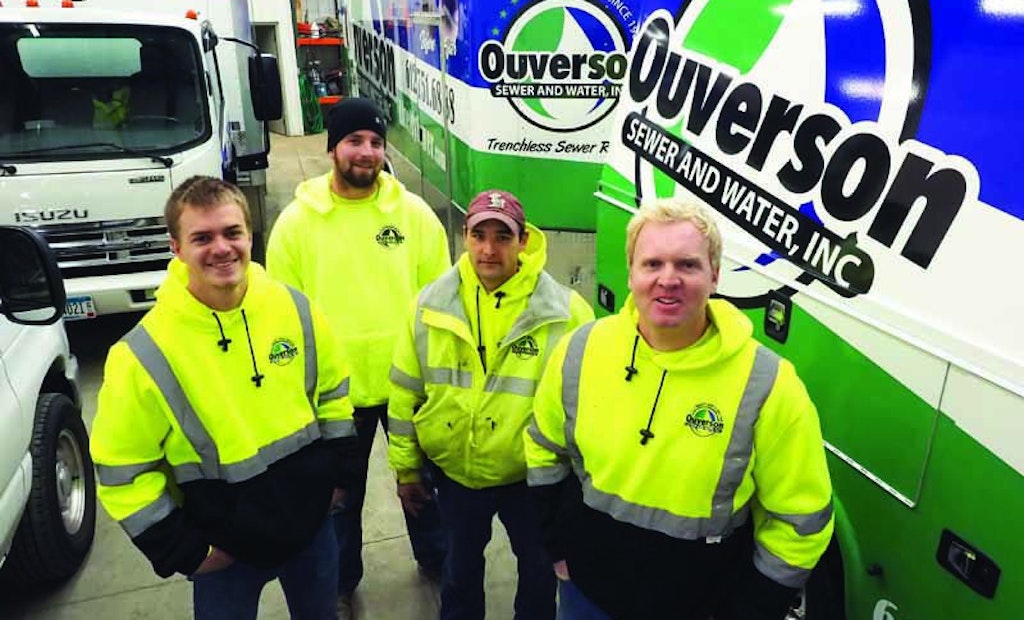
Interested in Plumbing?
Get Plumbing articles, news and videos right in your inbox! Sign up now.
Plumbing + Get AlertsDoug Ouverson capitalized on western Minneapolis’ decades-long suburban housing boom by building a company focused on lateral line installation. Today, his son, Troy, now the owner of Ouverson Sewer and Water, continues to build on the family legacy by lining many of the same laterals his father installed years ago.
The irony isn’t lost on the younger Ouverson, age 36, who took over the business in 2007 when his father retired. At that point, the company’s business focus took a sharp 180-degree turn. Instead of primarily installing laterals for new houses, the company embraced trenchless technology and began spot-repairing and lining failing laterals.
The Ouversons’ business U-turn underscores the importance of keeping up with technological advancements and spotting potential markets in which to apply them. In addition, it reflects the benefits of taking calculated risks based on a combination of sound research and gut instinct.
In another ironic twist, it was the elder Ouverson, not Troy, who strongly advocated for the change. “We saw lateral spot-repair technology at a trade show, and it was funny because Dad said, ‘What a great idea,’” Ouverson recalls. “You’d think it would’ve been the other way around. I thought it involved too much messing around.
“But on the other hand, I could see what was going on in Minneapolis, where infrastructure needed rehabbing,” Ouverson says. “Dad was also fed up with the cutthroat pricing — always doing more work for less money — and the cyclical market swings in new housing. So we figured it was time to make a change and get into pipe lining.”
In a perfect example of the old adage that timing is everything, the company made the switch in 2007, just before the deep recession hit full-force. “Kind of by luck, we got out just before the new-home market crashed,” Ouverson notes. Today, nearly all of the company’s revenue comes from lateral repairs and lining.
Steep learning curve
For decades, even with cyclical ups and downs, the installation business seemed as solid as a cast iron lateral line. “When my dad started out, there were many subdivisions converting from septic systems to sewers, so there was high demand for lateral installations for existing homes, as well as for new homes,” Ouverson recalls. “It was a very promising market; it seemed like it would never end.”
But when it did, the Ouversons’ adoption of new technology positioned the company to survive. It was not, however, an easy transition. “It was really difficult,” Ouverson says.
“My dad and I had worked together for all those years. … Everything was easy for us. He’d been doing it forever and I’d been tagging along with him since I was 12 years old. We didn’t need to talk about things while working; I knew what his move was and he knew my move without speaking a word.”
Getting the hang of pipe lining was a different story; the learning curve was steep. Many times, Ouverson says, he and his father didn’t get back from jobs until midnight because a pipe liner didn’t cure out as fast as they expected. That wasn’t the fault of the system they used, made by Perma-Liner Industries, he emphasizes. Instead, it was a factor of not realizing that each job required different applications, such as using the correct resins for various air temperatures.
“Say it’s 90 degrees outside and you need to leave plenty of time to wet-out the liner,” Ouverson explains. “Then you put it in the pipe, where it’s maybe only 57 degrees. Now you have hot resin in a cool pipe, so it takes a lot longer to cure. At times, some jobs took seven hours to cure out. After a year, I thought I felt comfortable shooting liners. But looking back now and being more realistic, I’d say it took about three or four years.”
The company uses Perma-Liner technology for lining long pipe runs; for spot repairs, it uses a system made by RS Technik. Crews perform liner wet-out operations in a 24-foot cargo trailer made by Interstate Cargo Group, towed by a 2015 Ford F-450 equipped with a Knapheide Mfg service body.
In addition, the company owns four mainline pipe inspection cameras and one mini-camera made by MyTana Mfg. Company; a 2012 Isuzu NPR service truck featuring a box body made by Delta-Waseca; a tractor/loader backhoe built by New Holland and carried on a 24-foot Towmaster flatbed trailer; a 1998 International 4800 with a J-Craft dump box; two large drain cleaning machines (for 4- and 6-inch pipes) made by General Pipe Cleaners; and a 2013 Ford Econoline service van.
Groundbreaking technology
On the plus side, it was easy to convince customers that trenchless lateral rehab was a superior option to open-cut repairs. “At the time, customers were dumbfounded that this technology was available,” Ouverson says. “It wasn’t that tough a sell. The product sells itself — it really does.”
The immediate appeal: no yard excavation or ripped-up landscaping. In addition, unless a customer has a small yard with no trees, sidewalks or other obstructions, pipe lining is generally less expensive than pipe replacement, he explains.
Competition was fierce early on as other contractors also decided to get into pipe lining. That resulted in project bidding wars, which eroded profit margins. Determination to do jobs right is what set Ouverson apart. “We always feel like we should do a job the way we’d do it for ourselves,” he says. “We’re still like that. We do the job right, no matter what it takes.”
After the recession, many competitors dropped pipe lining and either went back to what they did before or opted to enter completely different markets. The fact that Ouverson remained illustrates the importance of hiring good employees and giving them proper training. “People didn’t realize how important it was to have a good lead person and a good crew,” Ouverson says. “If you’re a carpenter and you cut a two-by-four wrong, you just go and grab another one. But if you make a mistake while lining a pipe under a highway, you end up excavating under a highway (to repair a mistake), and it takes a lot of jobs to make up for that one mistake.”
Initially, Ouverson says it was difficult to find good workers. But over time, the company was able to find great employees. “I can’t say enough good things about our current crew,” he says, referring to technicians Scott Theisen, Matt Allen and Allen’s cousin, David Allen. “The other day a customer gave us a tip and said he couldn’t believe how well we all work together — everyone anticipating each other’s moves.”
Ouverson says thorough training and bonuses help retain good employees. Another benefit: Employees get January, February and part of March off because it’s too cold to line pipes. “Seasonal work is an incentive for them because they know they’ve got a break coming up in winter,” he says.
Keys to success
Ouverson is quick to credit his father for the company’s success. He says his father ingrained in him the value of doing things correctly — no shortcuts allowed. “I’m a perfectionist,” he says. “I learned from my dad that you do things one way — the right way. When I was a kid, he’d always say, ‘Remember, we’re not digging this up again, so do it right.’ That’s stuck with me for all these years.”
Another thing that differentiates the company: Ouverson makes a point of working on each job. That’s not because his crew needs a lot of supervision; he just believes that homeowners and contractors like to see the business owner on the job. While that eats up a lot of valuable time that could be spent doing other things, and as such makes for longer days, he believes the personal connection with customers makes it worthwhile. “It’s a hard thing for me, trying to be a million places at one time,” he admits. “But at the same time, it’s also a good thing.”
Ouverson also believes that projecting a professional image is paramount to obtaining word-of-mouth referrals from customers. Employees wear matching T-shirts and sweatshirts and they regularly clean the company’s vehicles and equipment. “We get a lot of comments about those things,” he notes. “It’s hard to quantify, but I feel it’s important — and it’s overlooked by a lot of contractors. It just projects an image that your company cares.”
To buttress marketing and branding efforts, all of the company’s trailers and vehicles are lettered and vinyl wrapped the same way. Image, Ouverson notes, is everything. “We get comments about our vehicles all the time,” he says. “We don’t have 1,000 trucks running around, but people say they see our trucks all over town … and think we have many different crews working around town.”
Looking back, Ouverson is grateful that the company made the shift from lateral installation to rehabilitation. “Lining is so different because every day we’re working with a new customer,” he says. “And 99.9 percent of them are happy we’re there and give us compliments at the end of the day. It’s very rewarding work.”

